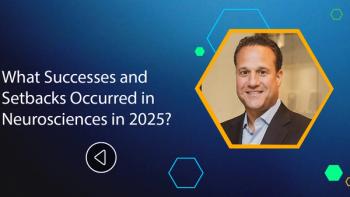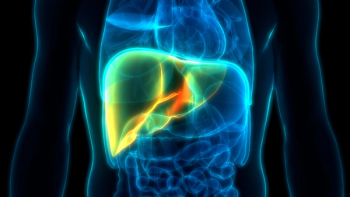We are at an inflection point that is driving a renaissance in antibody-drug conjugate (ADC) development. As successes in the clinic have led to more U.S. Food & Drug Administration (FDA) approvals, there has been a resurgence in interest in this proven modality with the introduction of novel, optimized approaches with the potential to meaningfully improve outcomes for people with cancer.
How is antibody-drug conjugate (ADC) development impacting oncology?
Key Takeaways
- Recent innovations across the multiple ADC components are critical to improving the therapeutic window as we advance the next generation of this class of drugs.
- Much of the momentum in ADC development is concentrated on leveraging what works in current available ADCs, while addressing their limitations to expand their use in a broader set of patients and indications.
- ADCs are now established as a mainstay of cancer care––and they stand to deliver tremendous progress for the field and for patients.
Recent innovations across the multiple ADC components, such as enhanced antibody-targeting to the tumors, better linker technology to minimize off-target effects and more tumor-specific drug conjugates, are critical to improving the therapeutic window as we advance the next generation of this class of drugs.
Early generation ADC approaches were often constrained by dose-limiting toxicities that emerged at therapeutic doses. This was due to a variety of reasons, including suboptimal tumor antigen targets, the use of broadly toxic drugs such as DNA damaging agents and unstable linkers that released the drug conjugates in the plasma. Tools are now emerging to extend the therapeutic window of this modality, addressing the limitations of first-generation ADCs. These newer therapies combine more specific cancer-targeting antibodies with powerful, highly targeted chemotherapy drugs, using improved chemical linker technology that allows for precise drug conjugations on the antibodies potentially leading to better safety and efficacy, as well as improved manufacturing reproducibility.
As researchers, clinicians and patients consider recent highlights from the American Society of Clinical Oncology (ASCO) Annual Meeting, in this article, I will discuss themes and exciting progress for ADCs.
Trends driving ADC momentum
Advancements in science are both iterative and sequential. Much of the momentum in ADC development is concentrated on leveraging what works in current available ADCs, while addressing their limitations to expand their use in a broader set of patients and indications.
One research area of particular interest is understanding how ADCs can be used earlier in a patient’s treatment journey, not just after other options have failed. For instance, combinations of ADC and checkpoint inhibitors have avoided the use of chemotherapy in some indications and more compounds are being developed in earlier lines of therapy replacing chemotherapy.
Additionally, the next generation of ADCs are poised to be optimized for patients whose cancer has stopped responding to earlier therapies, offering hope for those with fewer remaining options.
Another critical area of opportunity and focus of current scientific exploration is the expansion of cancer targets that ADCs can hit. Scientists are designing ADCs that can recognize other cancer-related proteins, offering the potential for ADCs to treat a wider range of cancers, including ones that haven’t historically responded well to treatment.
New technology is making ADCs more effective
The safety and efficacy of ADCs are related to their payload potency, linker stability and potential for off-target toxicity. In the past, the maximum tolerated ADC dose was insufficient to deliver effective antitumor activity. Technological progress––especially when it comes to the linkers that bind the antibody to the chemotherapy drug––has improved the therapeutic index. For example, improved linker stability helps ensure the toxic payload is only released in the correct compartment, not in healthy tissues. Innovations in the payloads themselves are also important. New versions aim to reduce common off-target side effects, and future ADCs may use radioisotopes or other nontraditional chemotherapies for even better precision. As for linkers, they are categorized between cleavable and non-cleavable. Cleavable release payload upon enzymatic activity in the tumor microenvironment or changes in pH. Their stability is variable, and they do release payload in the plasma. Improvement in anchoring and cleaving technologies, including novel chemistry, artificial amino acid binding and linker chemistry affects the on-target and off-target release. Non-cleavable linkers rely more on antibody internalization and degradation, but selection of internalizing antibodies is complex as it depends on factors such as type of target, antibody affinity payload binding and other factors.
Cleavable linkers represent the modality that has led to the majority of approved ADCs. Because of the poor binding in tumors, payload potency has become a critical component of ADCs. Modern payloads have greater cytotoxicity and can deliver high concentrations as well as payload efflux into bystander cells by engineering hydrophobicity into these molecules.
Some researchers are even looking beyond antibodies as delivery vehicles. In the future, we may see polymers or entirely new carriers that could make ADCs even more customizable and less toxic. This innovation is incredibly motivating to me.
What’s next in the ADC space?
ADCs are now established as a mainstay of cancer care – and they stand to deliver tremendous progress for the field and for patients. I would expect to see pharmaceutical and biotechnology companies showcasing their ADC pipelines at upcoming conferences and meetings specifically approaches that raise the bar in targeted delivery. That includes the efforts of our team at Zai Lab to build a portfolio of ADCs to help patients around the world. One candidate, ZL-1310, is our investigational, potential first-in-class Delta-like ligand (DLL3-targeted) ADC for patients with extensive-stage small cell lung cancer (ES-SCLC). The unique design of ZL-1310 utilizes a novel ADC technology platform called TMALIN® that leverages improvements to enrich ADCs in the tumor microenvironment and its affinity and half-life was selected with the goal of allowing more flexible administration.
We’re very pleased with the initial results from our Phase 1 study of ZL-1310 as a potential treatment for patients with ES-SCLC, given the urgent need to broaden treatment options, and new data from an expanded patient population presented at ASCO.
The road ahead
With improved design, better targeting and new delivery systems, in the years ahead, ADCs are poised to have a bigger impact for more patients. ADCs can also be designed to deliver radioconjugates, degrading small molecules, oligonucleotides, other small molecules, and aptamers. The universe of cytotoxic payloads is expanding, similar to how our field has evolved over the years, to allow for combination treatment approaches that extend beyond the advent of chemotherapy as a solo therapy regimen––for many patients and their families, this future can't come soon enough.






